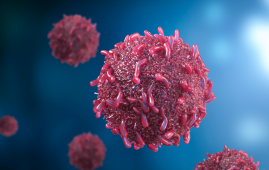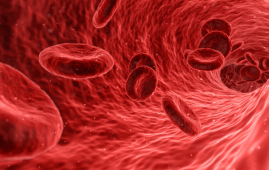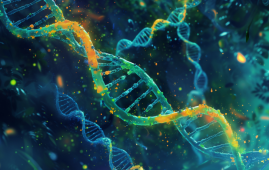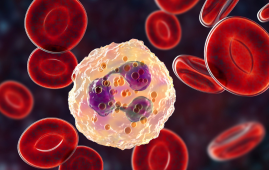

In a recent population-based cohort study published in the Journal of the American Medical Association (JAMA), researchers from the United States studied the potential link between various endometriosis subtypes and the prevalence of ovarian cancer.
They discovered that women with ovarian endometriomas and/or deep infiltrating endometriosis had a considerably higher risk of ovarian cancer, particularly type I ovarian cancer, than women without endometriosis.
Background
Endometriosis affects about 11% of reproductive-aged women, with a large proportion of those experiencing pelvic pain or infertility. It is linked to an increased risk of ovarian cancer, with women having nearly twice the risk as those without endometriosis. A recent meta-analysis discovered a strong link between endometriosis and specific ovarian cancer histotypes, including clear cell, endometrioid, and low-grade serous tumors. However, no consistent relationships were discovered with high-grade serous or mucinous tumors.
Furthermore, the link between endometriosis subtypes (superficial peritoneal endometriosis, ovarian endometriomas, and deep infiltrating endometriosis) and ovarian cancer histotypes needs to be thoroughly investigated. Understanding these links could lead to new etiological pathways and influence clinical decision-making. As a result, the current study looked into the possible link between endometriosis and its subtypes and the incidence of both general and histotype-specific ovarian cancers.
About the study – Endometriosis & Ovarian Cancer Risk
A retrospective cohort study (1992-2019) was created using the Utah Population Database (UPDB). Researchers found that 6.3% of women aged 18 to 55 had at least one endometriosis diagnosis. Endometriosis diagnoses were gathered from a variety of health records and classified into five types: superficial peritoneal endometriosis, ovarian endometriomas, deep infiltrating endometriosis, concurrent ovarian endometriomas, deep infiltrating endometriosis, and other.
The study comprised 78,893 women with endometriosis (“exposed”), who were matched 1:5 to 379,043 women without endometriosis (“unexposed”) based on birth year and birthplace. The participants’ average age was 36 years, with a 12-year follow-up period.
During that time period, 597 instances of ovarian cancer were detected through the Utah Cancer Registry utilizing International Classification of Diseases (ICD) codes and classified according to 2020 World Health Association (WHO) recommendations. The most common histotypes—high-grade serous, low-grade serous, endometrioid, mucinous, and clear cell—mirrored earlier distributions. For analysis, cases were classified as type I (endometrioid, clear cell, mucinous, low-grade serous) or type II (high-grade serous).
The demographic information includes sex, race, ethnicity, birth and death dates, and type of habitation. The health data included reproductive and surgical histories, as well as body mass index (BMI) from driver’s licenses and smoking status from ICD codes. The statistical analysis made use of Cox proportional hazards models with robust variance estimates, Kolmogorov-type supremum tests, extended linear models, and probabilistic bias analyses.
Results and discussion
Approximately 75% of women had given birth (parous), with 6% having had both ovaries surgically removed at follow-up. Women with endometriosis were more likely to have not had children (31% vs. 24%) and to have had their uterus surgically removed (39% vs. 6%) than women without endometriosis.
Endometriosis was found to be associated with an elevated risk of all ovarian cancer histotypes, with adjusted hazard ratios (aHRs) ranging from 2.70 for high-grade serous ovarian cancer to 11.15 for clear cell carcinoma, as compared to women who did not have the condition. Women with endometriosis were 4.20 times more likely to develop ovarian cancer. The highest ovarian cancer risk was reported in women with deep infiltrating endometriosis and/or ovarian endometriomas (aHR, 9.66), with the highest risk for deep infiltrating endometriosis alone followed by deep infiltrating endometriosis plus ovarian endometriomas.
Deep penetrating endometriosis and/or ovarian endometriomas were found to be significantly linked with type I ovarian cancer (aHR, 18.96). Over a 12-year period, risk differences revealed an increase of 9.90 incidences of ovarian tumor per 10,000 women with endometriosis. Quantitative bias analysis revealed that the true connections may be greater than observed, with bias-adjusted HRs of 8.29 overall, 20.2 for type I, and 3.9 for type II ovarian tumors.
The study’s strength is its large-scale, population-based design. However, the study is limited by the possibility of misclassifying endometriosis due to diagnostic challenges, misclassifying ovarian cancer histotypes, misclassifying BMI and smoking, incomplete data on hysterectomies and oophorectomies, and missing data on oral contraceptives and GnRH agonists, which could have underestimated the true associations.
Conclusion
According to the findings of this study, endometriosis is related with a considerably higher risk of ovarian tumor, namely type I ovarian cancer. Women with deep infiltrating endometriosis and/or ovarian endometriomas are roughly 19 times more likely to develop type I ovarian cancer than those who do not have endometriosis.
The study emphasizes the urgent need for future research to better understand the biological mechanisms underlying these associations in order to improve ovarian tumor screening and prevention strategies, particularly for women with severe endometriosis and genetic risk factors, as well as to identify new molecular targets for treatment.
For more information: Barnard ME, Farland LV, Yan B, et al. Endometriosis Typology and Ovarian Cancer Risk. JAMA.DOI:10.1001/jama.2024.9210
more recommended stories
 Silica Nanomatrix Boosts Dendritic Cell Cancer Therapy
Silica Nanomatrix Boosts Dendritic Cell Cancer TherapyKey Points Summary Researchers developed a.
 Vagus Nerve and Cardiac Aging: New Heart Study
Vagus Nerve and Cardiac Aging: New Heart StudyKey Takeaways for Healthcare Professionals Preserving.
 Cognitive Distraction From Conversation While Driving
Cognitive Distraction From Conversation While DrivingKey Takeaways (Quick Summary) Talking, not.
 Fat-Regulating Enzyme Offers New Target for Obesity
Fat-Regulating Enzyme Offers New Target for ObesityKey Highlights (Quick Summary) Researchers identified.
 Spatial Computing Explains How Brain Organizes Cognition
Spatial Computing Explains How Brain Organizes CognitionKey Takeaways (Quick Summary) MIT researchers.
 Gestational Diabetes Risk Identified by Blood Metabolites
Gestational Diabetes Risk Identified by Blood MetabolitesKey Takeaways (Quick Summary for Clinicians).
 Phage Therapy Study Reveals RNA-Based Infection Control
Phage Therapy Study Reveals RNA-Based Infection ControlKey Takeaways (Quick Summary) Researchers uncovered.
 Pelvic Floor Disorders: Treatable Yet Often Ignored
Pelvic Floor Disorders: Treatable Yet Often IgnoredKey Takeaways (Quick Summary) Pelvic floor.
 Urine-Based microRNA Aging Clock Predicts Biological Age
Urine-Based microRNA Aging Clock Predicts Biological AgeKey Takeaways (Quick Summary) Researchers developed.
 Circadian Control of Neutrophils in Myocardial Infarction
Circadian Control of Neutrophils in Myocardial InfarctionKey Takeaways for HCPs Neutrophil activity.

Leave a Comment